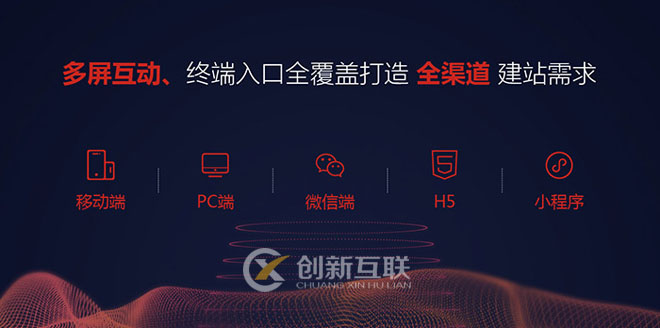Android音視頻深入四錄視頻MP4(附源碼下載)-創新互聯
本篇項目地址,名字是《錄音視頻(有的播放器不能放,而且沒有時長顯示)》,求star

https://github.com/979451341/Audio-and-video-learning-materials
1.MediaMuser說明
MediaMuser:將封裝編碼后的視頻流和音頻流到mp4容器中,說白了能夠將音視頻整合成一個MP4文件,MediaMuxer最多僅支持一個視頻track和一個音頻track,所以如果有多個音頻track可以先把它們混合成為一個音頻track然后再使用MediaMuxer封裝到mp4容器中。
MediaMuxer muxer = new MediaMuxer("temp.mp4", OutputFormat.MUXER_OUTPUT_MPEG_4);
// More often, the MediaFormat will be retrieved from MediaCodec.getOutputFormat()
// or MediaExtractor.getTrackFormat().
MediaFormat audioFormat = new MediaFormat(...);
MediaFormat videoFormat = new MediaFormat(...);
int audioTrackIndex = muxer.addTrack(audioFormat);
int videoTrackIndex = muxer.addTrack(videoFormat);
ByteBuffer inputBuffer = ByteBuffer.allocate(bufferSize);
boolean finished = false;
BufferInfo bufferInfo = new BufferInfo();
muxer.start();
while(!finished) {
// getInputBuffer() will fill the inputBuffer with one frame of encoded
// sample from either MediaCodec or MediaExtractor, set isAudioSample to
// true when the sample is audio data, set up all the fields of bufferInfo,
// and return true if there are no more samples.
finished = getInputBuffer(inputBuffer, isAudioSample, bufferInfo);
if (!finished) {
int currentTrackIndex = isAudioSample ? audioTrackIndex : videoTrackIndex;
muxer.writeSampleData(currentTrackIndex, inputBuffer, bufferInfo);
}
};
muxer.stop();
muxer.release();
2.錄視頻過程
我先貼個圖,因為我覺得我后面會把自己繞暈,整理一下
先將Camera收集的數據顯示在SurfaceView
surfaceHolder = surfaceView.getHolder();
surfaceHolder.addCallback(this);
@Override
public void surfaceCreated(SurfaceHolder surfaceHolder) {
Log.w("MainActivity", "enter surfaceCreated method");
// 目前設定的是,當surface創建后,就打開攝像頭開始預覽
camera = Camera.open();
try {
camera.setPreviewDisplay(surfaceHolder);
camera.startPreview();
} catch (IOException e) {
e.printStackTrace();
}
}然后開始錄視頻,開啟兩個線程分別處理音視頻數據
private void initMuxer() {
muxerDatas = new Vector<>();
fileSwapHelper = new FileUtils();
audioThread = new AudioEncoderThread((new WeakReference<MediaMuxerThread>(this)));
videoThread = new VideoEncoderThread(1920, 1080, new WeakReference<MediaMuxerThread>(this));
audioThread.start();
videoThread.start();
try {
readyStart();
} catch (IOException e) {
Log.e(TAG, "initMuxer 異常:" + e.toString());
}
}將兩個track加入MediaMuxer
mediaMuxer.writeSampleData(track, data.byteBuf, data.bufferInfo);
我們再來看看視頻數據如何處理的
MediaCodec初始化和配置
mediaFormat = MediaFormat.createVideoFormat(MIME_TYPE, this.mWidth, this.mHeight);
mediaFormat.setInteger(MediaFormat.KEY_BIT_RATE, BIT_RATE);
mediaFormat.setInteger(MediaFormat.KEY_FRAME_RATE, FRAME_RATE);
mediaFormat.setInteger(MediaFormat.KEY_COLOR_FORMAT, MediaCodecInfo.CodecCapabilities.COLOR_FormatYUV420SemiPlanar);
mediaFormat.setInteger(MediaFormat.KEY_I_FRAME_INTERVAL, IFRAME_INTERVAL);開啟MediaCodec
mMediaCodec = MediaCodec.createByCodecName(mCodecInfo.getName());
mMediaCodec.configure(mediaFormat, null, null, MediaCodec.CONFIGURE_FLAG_ENCODE);
mMediaCodec.start();
然后SurfaceView傳入視頻數據數據導入
@Override
public void onPreviewFrame(byte[] bytes, Camera camera) {
MediaMuxerThread.addVideoFrameData(bytes);
}這個數據MediaMuxerThread又傳給MediaThread
public void add(byte[] data) {
if (frameBytes != null && isMuxerReady) {
frameBytes.add(data);
}
}然后循環從frameBytes里取數據
if (!frameBytes.isEmpty()) {
byte[] bytes = this.frameBytes.remove(0);
Log.e("ang-->", "解碼視頻數據:" + bytes.length);
try {
encodeFrame(bytes);
} catch (Exception e) {
Log.e(TAG, "解碼視頻(Video)數據 失敗");
e.printStackTrace();
}
取出的數據哪去轉換,也就是說mFrameData這個數據才是最后編碼出視頻
// 將原始的N21數據轉為I420
NV21toI420SemiPlanar(input, mFrameData, this.mWidth, this.mHeight);
private static void NV21toI420SemiPlanar(byte[] nv21bytes, byte[] i420bytes, int width, int height) {
System.arraycopy(nv21bytes, 0, i420bytes, 0, width * height);
for (int i = width * height; i < nv21bytes.length; i += 2) {
i420bytes[i] = nv21bytes[i + 1];
i420bytes[i + 1] = nv21bytes[i];
}
}MediaCodec獲取數據從mFrameData
mMediaCodec.queueInputBuffer(inputBufferIndex, 0, mFrameData.length, System.nanoTime() / 1000, 0);
然后又拿出數據給muxer
mediaMuxer.addMuxerData(new MediaMuxerThread.MuxerData(MediaMuxerThread.TRACK_VIDEO, outputBuffer, mBufferInfo));
啊啊啊啊啊啊啊,瘋了,代碼可能看起來很糊,很多,但是絕大多數代碼是為了協調為了判斷當前還在錄視頻,但是真正的在錄視頻的代碼的運行情況就是兩條線,MediaCodec使用queueInputBuffer獲取數據,然后進行編碼dequeueOutputBuffer給MediaMuxer,AudioCodec也是一樣的套路
源碼地址在文章首部,各位多多研究,對了這個代碼有問題,沒有顯示時長,有一些播放器不能用,手機自帶應該沒問題
另外有需要云服務器可以了解下創新互聯scvps.cn,海內外云服務器15元起步,三天無理由+7*72小時售后在線,公司持有idc許可證,提供“云服務器、裸金屬服務器、高防服務器、香港服務器、美國服務器、虛擬主機、免備案服務器”等云主機租用服務以及企業上云的綜合解決方案,具有“安全穩定、簡單易用、服務可用性高、性價比高”等特點與優勢,專為企業上云打造定制,能夠滿足用戶豐富、多元化的應用場景需求。
新聞標題:Android音視頻深入四錄視頻MP4(附源碼下載)-創新互聯
本文網址:http://vcdvsql.cn/article6/hsiig.html
成都網站建設公司_創新互聯,為您提供用戶體驗、網站營銷、網站設計、網站維護、網站建設、品牌網站制作
聲明:本網站發布的內容(圖片、視頻和文字)以用戶投稿、用戶轉載內容為主,如果涉及侵權請盡快告知,我們將會在第一時間刪除。文章觀點不代表本網站立場,如需處理請聯系客服。電話:028-86922220;郵箱:631063699@qq.com。內容未經允許不得轉載,或轉載時需注明來源: 創新互聯

- 如何通過網站建設大力度提升網站流量? 2020-11-02
- 網站建設公司哪家好呢?教你快速識別好公司 2023-02-24
- 上海網站建設的四大核心流程 2020-11-12
- 四川廣元網站建設如何提高排名? 2021-08-13
- 網站建設及運營的五個錯誤方向 2016-03-29
- 網站建設需要多久? 2016-09-09
- 網站建設之鼠標事件用法詳解 2020-05-03
- 營銷型網站建設需要注意哪些細節 2021-08-31
- 河南網站建設-競爭不激烈的網站制作行業到底要怎樣優化 2021-11-27
- 引領網站建設邁向成功必備4個要素 2021-07-12
- 一家以服務為核心的網站建設公司 2022-08-07
- 中小企業網站建設與推廣面臨哪些問題 2023-01-29